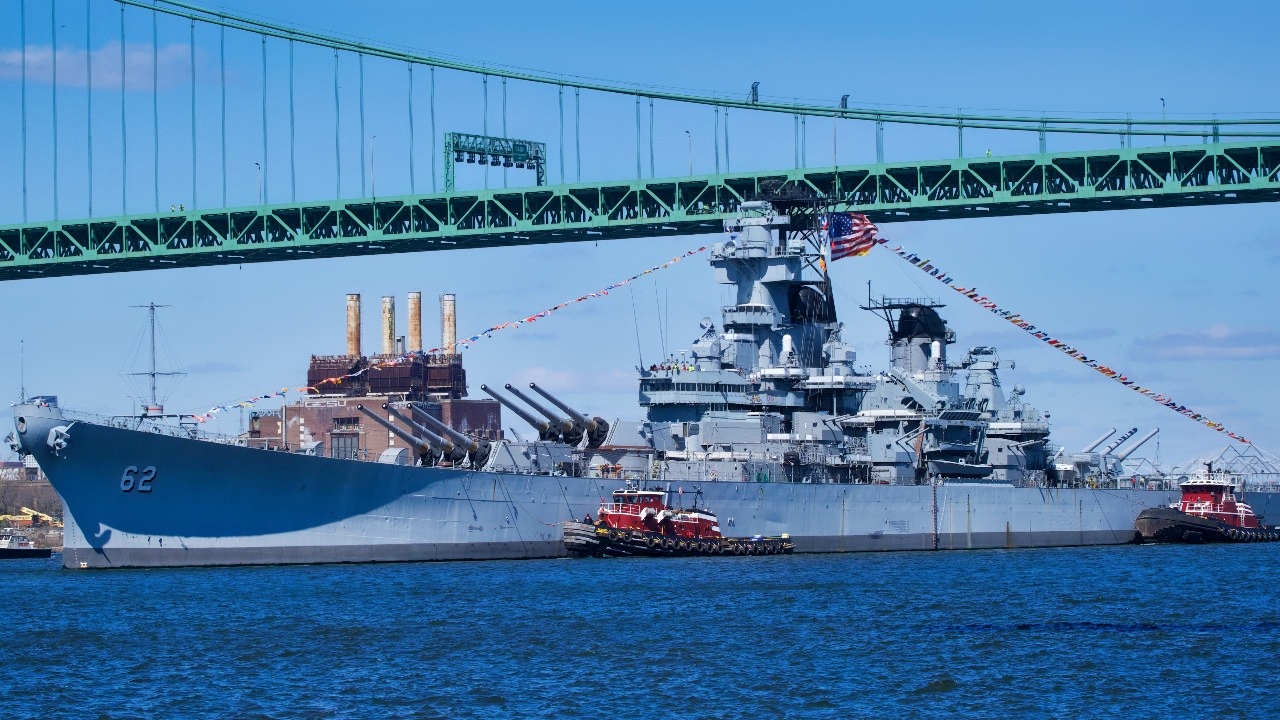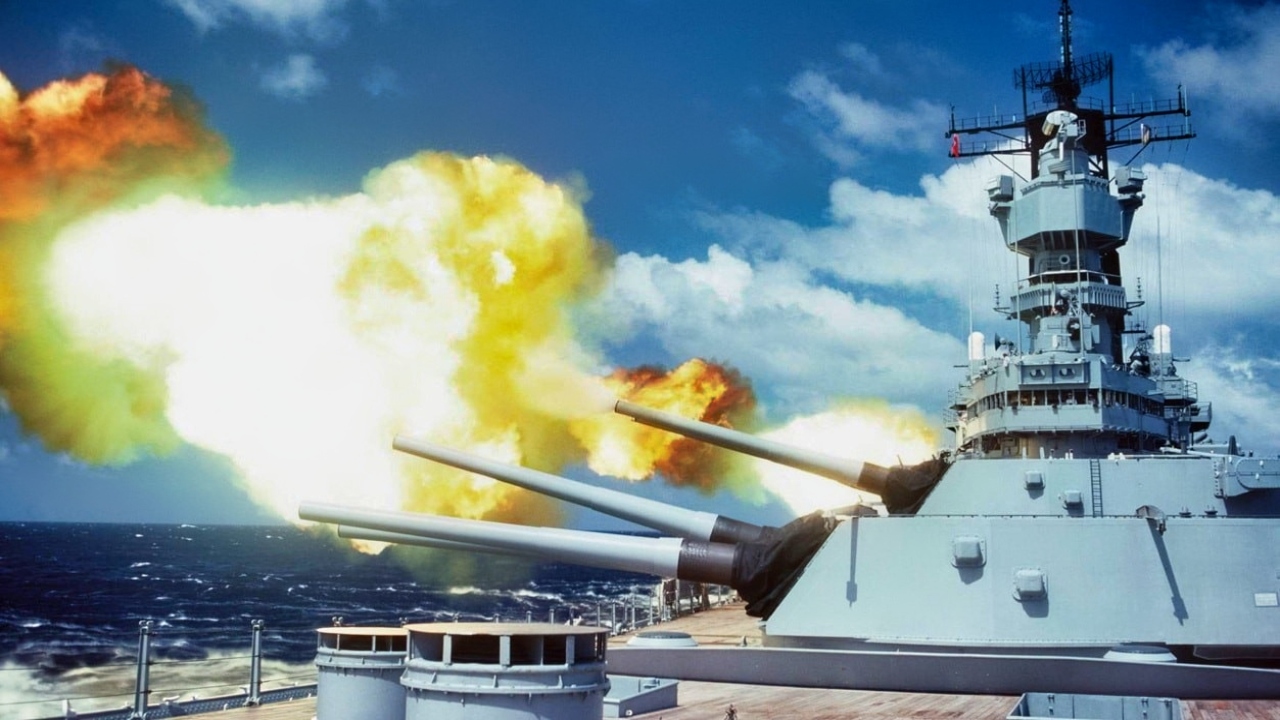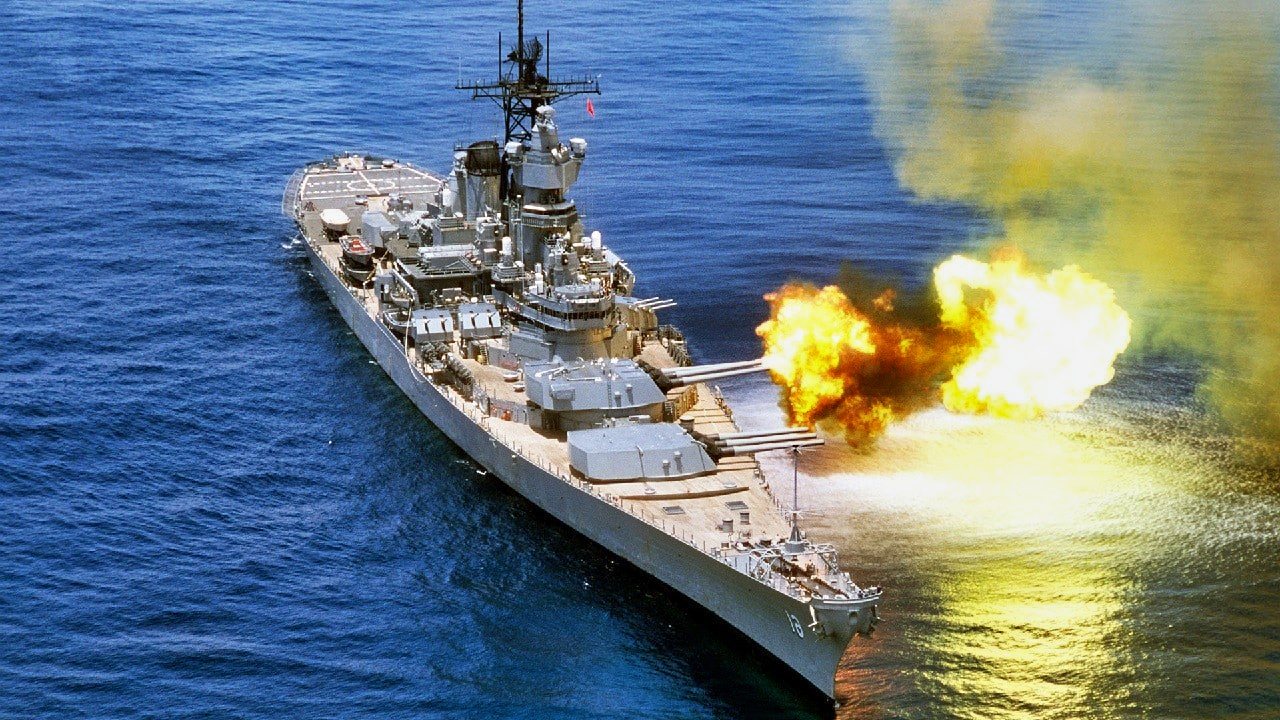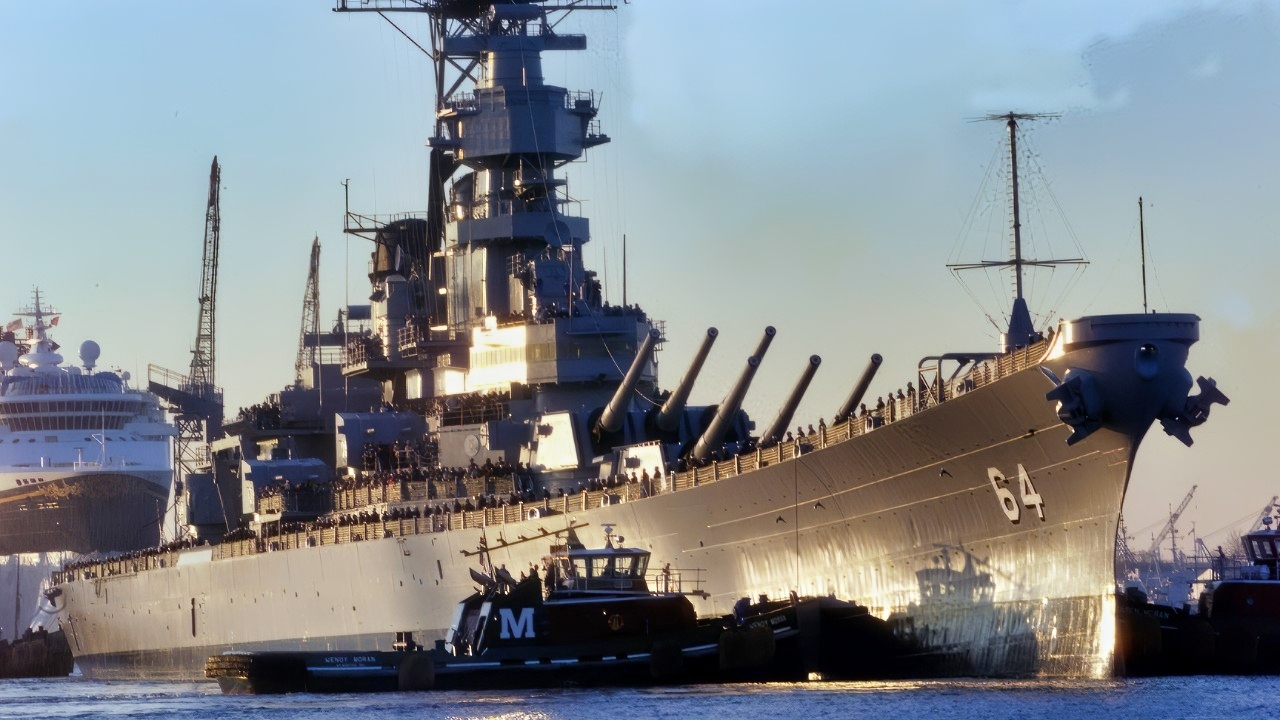Key Points and Summary – The Montana class was the U.S. Navy’s unbuilt “super battleship”: larger than Iowas, with twelve 16-inch guns, thicker armor, and 2,700 crew.
-Intended for a two-ocean WWII fleet and to counter Japan’s Yamato line, five Montanas were authorized but canceled in 1943 as carriers, amphibious forces, and escorts took precedence—and as 28-knot battleships proved too slow to screen fast carrier groups.

USS New Jersey Iowa-Class Battleship. Image Credit: Creative Commons.

Iowa-Class Battleship. Image Credit: Creative Commons.
-In an alternate history, Montanas would have excelled at Pacific shore bombardment and later provided fearsome fire support in Korea (and perhaps Vietnam) and deterrence in the Atlantic.
-Even so, airpower, submarines, and guided weapons were rendering big-gun capital ships increasingly peripheral. In fact, many defense experts say this class of battleship had no chance of ever sailing and was setup to fail thanks to the rise of the aircraft carrier.
What If the Mighty Montana-class Battleships Had Been Built?
It is difficult to imagine a battleship larger than the mighty Iowa-class battlewagons with more guns, thicker armor, and even additional sailors on board. That is what the U.S. Navy planned with its World War II-era Montana-class of battleships.
These dreadnoughts were never built, but it is an interesting exercise to explore whether they could have been produced in large numbers and if they could have made a decisive impact on naval combat during the war and in subsequent conflicts.
The United States wanted a super battleship to reign supreme on the high seas. Japan had the Design A-150 Super Yamato-class, which it planned to outclass the battleships of the U.S. Navy.
It was a time of the pre-war great power competition, and the Americans wanted a warship that could outcompete the enemy.
More Ships Needed for a Two-Front War
The Montana-class would be the last battleships that the United States ever built. The acquisition strategy for the vessels was based on the “Two Ocean Navy” (Atlantic and Pacific) expansion plan, which would determine the rate of shipbuilding after 1940.
Montana-Class: These Bad Boys Were Going to Be Mammoth
The Montana-class would be 33 percent larger than the Iowa-class. They were planned to be 920 feet in length – about the size of a football field – and longer than the 860-foot-long Iowa-class. The beam was 121 feet on the Montana-class.
They would displace a hefty 71,000 tons with a combat load – heavier than the Iowa-class. The Montana-class was also bigger than the last battleship ever built in the world – the HMS Vanguard.
The Americans wanted five Montana-class battleships with the Montana (BB-67), Ohio (BB-68), Maine (BB-69), New Hampshire (BB-70), and the Louisiana (BB-71) making up the awe-inspiring group. They were planned to be built in Brooklyn, Norfolk, and Philadelphia.
There would be more than 2,700 officers and enlisted personnel on each vessel. That is nearly enough to run a modern aircraft carrier.
Even More Guns Than the Iowa-class
That’s not all. Each Montana-class would have featured a dozen 16-inch guns (four three-gun turrets), which was three more than the Iowa-class. The size of the Montana-class meant a bigger supply of armor needed to be on board.
The armor with the extra guns created more weight, and the Montana-class was not going to be able to escort carriers very well with a top speed of just 28 knots (slower than the flat-tops).
There Were Drawbacks to Montana-Class
Also, the Montana-class might have succumbed to a significant torpedo attack from submarines or those launched by diving Japanese airplanes. The Montana-class could have taken on the Japanese Yamato or the Super Yamato, though in a head-to-head match-up.
But force-on-force battles among these massive vessels were not to come about toward the end of the war. Moreover, the Montana-class could have also been susceptible to Kamikaze attacks. Pearl Harbor demonstrated that dive bombers and torpedo-carrying planes could sink battleships. The Montana-class was outdated by the time it was planned to be built.

Iowa-Class Battleship. Image Credit: Creative Commons.

Iowa-Class Battleship. Image Credit: Creative Commons.
Also, the Navy needed more aircraft carriers, amphibious ships, and minesweepers. So the Montana-class was cancelled in 1943. Had it been built, it would have been the most powerful ship in the Navy.
What could the Montana-class have accomplished? The main guns were a prominent feature of the ship, and the extra firepower would have been essential to shell the enemy to prep for amphibious landings during the island hopping in the Pacific.
Additionally, Navy battle planners recognized that an attack on the Japanese mainland was necessary to win the war in the Pacific.
This would have required a massive landing force larger than the one in Normandy. The five Montana-class ships would have been perfect for shore bombardment.
Dominating the Post-World War II Threat Environment
Another great thing about the Montana-class is that they could have been used after World War II. The Navy could not have predicted the advent of the Korean War.
Still, the Iowa-class battleships were activated for that conflict and played a significant role in punishing the North Koreans and Chinese.
The massive firepower from the Montana-class could have brought more death and destruction to the enemy. Additional shore batteries, command and control centers, ammunition dumps, and supply infrastructure could have been destroyed.
This would have been valuable in Vietnam, too, if the Montana-class could have lived that long to fight again.
The large guns would have come in handy against the North Vietnamese Army and Viet Cong. Again, the Navy could not have foreseen Vietnam.
However, the Pacific was still a hot spot, and the United States wanted to fight Communism and not “lose” to the global Marxist movement that was endangering Southeast Asia.
And it wasn’t just the Indo-Pacific. Since there would have been five Montana-class ships, two could have been sent to the Atlantic to support NATO countries against the Soviet Union. The firepower would have been welcome in the European theater if war arose.
Thus, the Navy could have utilized the Montana-class during and after World War II. This is a counterfactual historical analysis, as the Montana-class was never built; however, it still had several potential use cases in future conflicts.
They would have outgunned anything in the water and supported U.S. and allied efforts in Korea, Vietnam, and the Cold War. The Americans may have made a mistake by cancelling the mammoth vessels.
About the Author: Brent M. Eastwood
Brent M. Eastwood, PhD is the author of Don’t Turn Your Back On the World: a Conservative Foreign Policy and Humans, Machines, and Data: Future Trends in Warfare plus two other books. Brent was the founder and CEO of a tech firm that predicted world events using artificial intelligence. He served as a legislative fellow for US Senator Tim Scott and advised the senator on defense and foreign policy issues. He has taught at American University, George Washington University, and George Mason University. Brent is a former US Army Infantry officer. He can be followed on X @BMEastwood.
More Military
Russia’s Su-34 Fullback Fighter-Bombers Are Going Down in Ukraine
America Bought A Massive Fleet of MiG-29 Fighters
Russia’s MiG-41 6th-Generation Mach 4.3 ‘NGAD’ Fighter Nightmare Begins
A U.S. Navy Nuclear Attack Submarine Sank Due to an ‘Uncovered Manhole’ Mishap
The U.S. Navy’s Nuclear Aircraft Carrier Nightmares are Just Beginning










